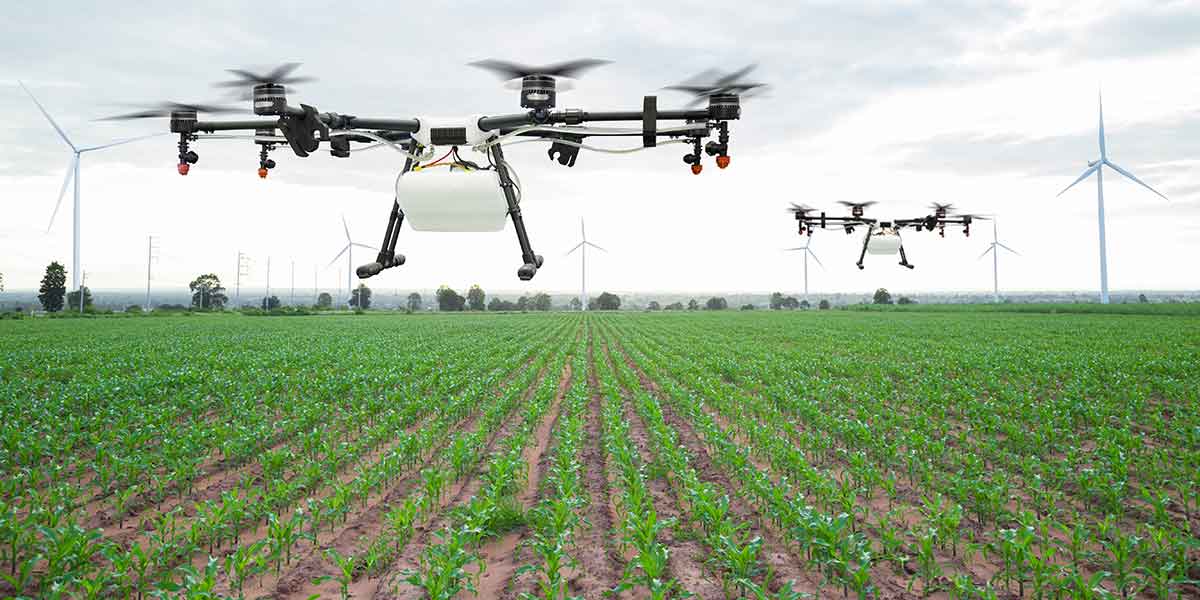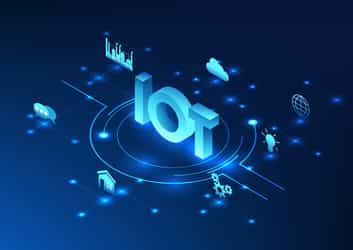
Aug 13, 2021
Blog Digital World Drones: Market Trends You Need To Know
Drone Industry And Technology Background
The utility of drones has grown rapidly in last few years because unlike manned aircrafts, drones can fly or operate in the air for long periods of time. They are also less expensive than military aircrafts, ships or ground vehicles and there is no potential for the loss of human life for the operations crew.
Drones have been in existence in varying forms since the 1850s. Drone technology was initially used by the Austrians when they launched 200 pilotless balloons that were mounted with bombs to strike Venice, which marked the first time that a UAV was used to bomb a city.
During the 20th century, military research expanded as a result of technological innovations. Surveillance satellites successfully enabled GPS-systems, and defense researchers constructed information-swapping protocols that are essential to the internet. UAVs were designed initially for reconnaissance purposes, commercial development and paramilitary applications that were often unavailable to the public.
Drones are operated by ground crews who launch them from the conflict zone and then transfer operation to controllers. Drone movement is displayed on screens or other displays. Typically, three people handle drones: one person operates the drones; one who monitors and operates the sensors and cameras; and one who remains in contact with the commanders and ground troops in the deployed zone. Drones provide an effective method for surveillance, security and missile combat.
With the advancement of technology and a decrease in drone prices, civilians’ drone use is rapidly increasing as they use drones to survey geography, perform thermal or visual imaging of a region and enter dangerous environments without causing risk to human lives.
Factors Driving Drones Market
Several factors are driving growth in the global market for drones:
Increased Usage In Surveillance and Protection
Some drones are aircraft operated without pilots on board. Those drones are engaged for surveillance, data collection and combatting threats without concerns about hostage situations or the safety of the pilot. The demand for UAVs is constantly increasing for border patrols, as well as for paramilitary units and police to fight drug trafficking and other crimes.
UAVs have seen wide adoption across many military applications, including air strikes, surveillance, traffic monitoring, rescue and search operations, bomb threats, hostage situation control and fugitive tracking. UAVs do not pose any threat to human lives, as government agencies are adopting this technology to counter critical situations.
Increased Usage In Agriculture
The agriculture industry is one of the major sectors to have benefited from the use of UAVs. Drones can map areas quickly and spray water on crops or fertilize fields.
Robotic drones with sensors compile a large sum of the big data that farmers can use to manage risk and increase agility. In fact, in Japan, one-third of the rice fields are tended by robotic helicopters. Drones also prove to be cost-effective, as they use fewer chemicals.
Increased Usage In Unmanned Underwater Vehicles For AI And Navigation
The need for unmanned underwater vehicles (UUVs) is driven primarily by safety. When more UUVs are put into operation, fewer humans are required to work in risky underwater environments, in manned submarines or with diving gear. The Navy uses UUVs to counter mine warfare, locate submerged obstacles and wrecks, map ocean floors and photograph underwater archeological sites.
Maritime industries also use UUVs for offshore oil production and exploration. The offshore oil industry often operates in deep and dangerous coastal waters, so the risk to human lives is severe. Robotic underwater vehicles help the industry save money and keep its workers safe by remotely maintaining and inspecting pipelines, cleaning up debris and assisting in drilling. This trend is expected to continue for the next five years, fueling demand for UUVs for both military and commercial purposes.
Increased Usage In Military
Drones are deployed to carry out certain operations, including data collection, surveillance and missile combats to minimize threats to the lives of army personnel. In terms of surveillance, UAVs can travel across borders with ease without putting the lives of humans at risk. Their ability to loiter over targets permits them to monitor patterns of life, provide 24/7 surveillance data, recognize and track potential threats and establish the best suitable time to strike to avoid civilian casualties.
In terms of fatal use of force, drones help tackle and even eliminate missiles, reducing collateral damage in comparison to other weapons systems. Drones provide a pin-prick, limited, covert strike to avert widening the war zone. In addition, the removal of pilots from combat zones completely eliminates the threat to pilots' lives. Drones are operated from facilities that are far away from the combat location, which helps their operators make better targeting decisions, as they do not have to fear for their own safety. Drones also help diminish the number of civilian casualties, a factor that helps drive the market.
Increased Usage In News Broadcasting
Many news agencies deploy drones to capture and broadcast events, a task that has been proven to be easy and economical. Drones are equipped with cameras that can fly lower and into smaller areas, which is not possible using larger manned aircrafts. Helicopters only provide wide aerial views during high-speed chases, whereas drones viewers get a look out of the drivers-side window of a speeding car on the news.
Additional Trends And Projections About Drones Market
For additional intel into the global market for drones:
Download a free overview of our report, Drone Technology and Global Markets.
Explore our Innovation Spotlight and interview with an industry leader in drone technology: Innovation Spotlight: Hanley Innovations: Drone Technology

Sarah Greenberg is the Manager of Content Marketing at BCC Research. She creates our blog, social media and email content.

From smartphones to satellites, antennas play a vital role in enabling the seaml...

Introduction Artificial Intelligence (AI) and the Internet of Things (IoT) are r...

We are your trusted research partner, providing actionable insights and custom consulting across life sciences, advanced materials, and technology. Allow BCC Research to nurture your smartest business decisions today, tomorrow, and beyond.
Contact UsBCC Research provides objective, unbiased measurement and assessment of market opportunities with detailed market research reports. Our experienced industry analysts assess growth opportunities, market sizing, technologies, applications, supply chains and companies with the singular goal of helping you make informed business decisions, free of noise and hype.